Roofing Companies Wallsend
Top Roofing Services in Wallsend
Receive up to 3 Roofing Service quotes for your project today! Compare profiles, reviews, accreditations, portfolio, etc... and choose the best service.

Newcastle upon Tyne Roofing
51 reviewsNewcastle upon Tyne, NE1, GBNewcastle upon Tyne Roofing is a professional roofing contractor serving the North East of England. With years of experience, we offer a wide range of services, from roof repairs to replacements, using the best environmentally friendly products. Our team of fully licensed professionals is dedicated to providing top-quality roofing services to both domestic and commercial clients. We pride ourselves on our expertise, customer satisfaction, and commitment to safety. Our fleet of lorries equipped with cherry pickers allows us to handle roofs up to 35 meters high. We conduct free roof surveys with detailed reports and provide instant quotes at competitive rates. We strive to exceed customer expectations by implementing leading strategies and using the right solutions for each situation. Contact us today to experience our exceptional customer service and learn more about our roofing services.
- Services
- Why Us?
- Gallery
Get Quote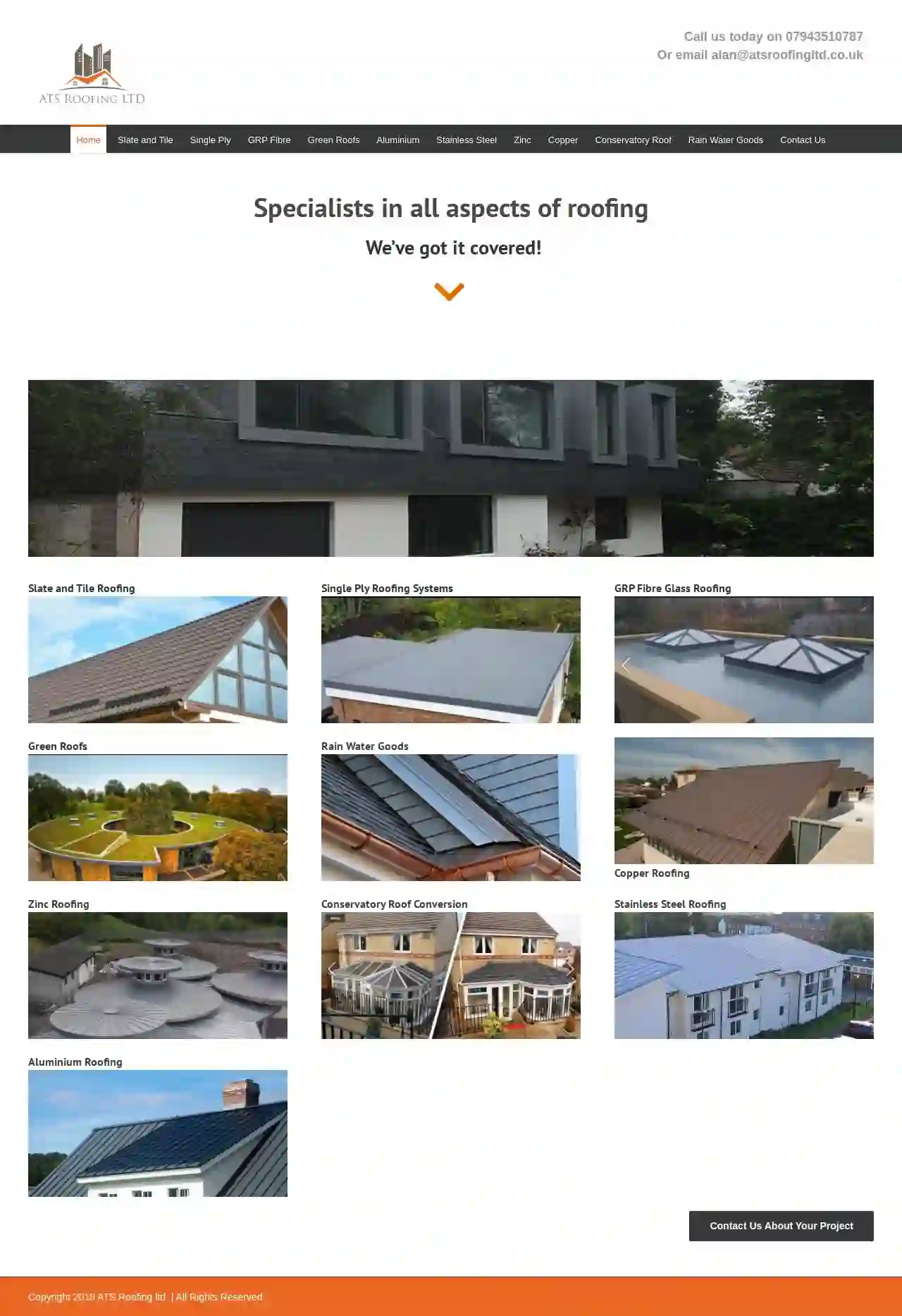
ATS Roofing LTD
51 reviewsNewcastle, GBSpecialists in all aspects of roofing. We’ve got it covered! ATS Roofing Ltd. is a company that has been established since 2018. We are dedicated to providing high-quality roofing services to our customers. Our team of experts has extensive experience in all aspects of roofing, including Slate and Tile Roofing, Single Ply Roofing Systems, GRP Fibre Glass Roofing, Green Roofs, Rain Water Goods, Copper Roofing, Zinc Roofing, Conservatory Roof Conversion, and Stainless Steel Roofing. We are committed to delivering exceptional results and providing excellent customer service. Contact us today to learn more about our services and how we can help you with your roofing needs.
- Services
- Why Us?
- Gallery
Get Quote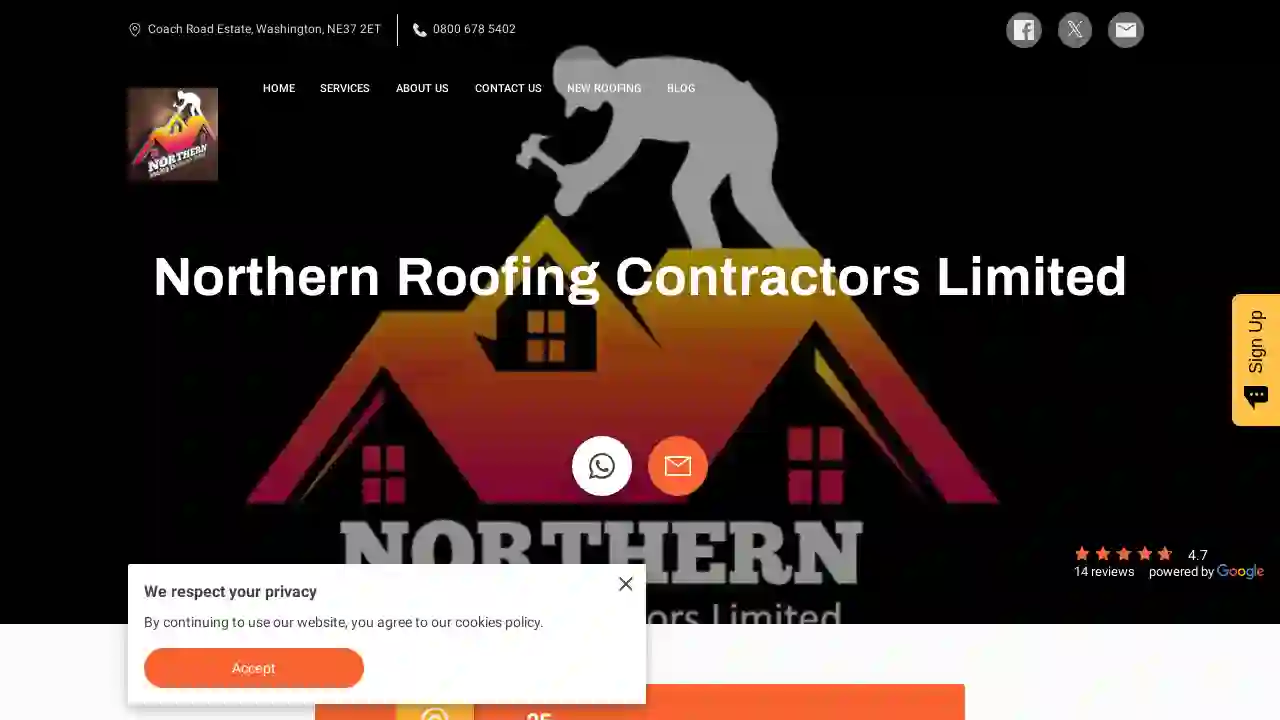
Northern Roofing Contractors Limited
512 reviewsCoach Road Estate, Washington, NE37 2ET, GBNorthern Roofing Contractors Limited is a roofing company in north east. We cover all aspects of roofing work from a little repair to a completely new roof. We are experts in rubber roofing, porch roofs, insulation and all other roofing jobs. Our dedicated team are courteous, approachable and fully up to date with the latest building regulations, ensuring all projects are completed to the highest standard.
- Services
- Why Us?
- Testimonials
- Gallery
Get Quote
J Ramsay Roofing
323 Market Lane, Whickham, NE16 3DZ, GBJ.Ramsay Roofing has been a trusted name in the roofing industry since 2005. We've built a reputation for excellence in both residential and commercial roofing services. From roof repairs to complete roof replacements, we've got you covered. At J.Ramsay Roofing, we take a customer-centric approach to everything we do. We believe in listening to our customers' needs and tailoring our services to meet those needs. Our goal is to build long-lasting relationships with our customers by providing exceptional service and quality workmanship. Our team of roofing professionals has years of experience and expertise in all aspects of roofing. We stay up-to-date with the latest industry trends and use the best materials and techniques to ensure that your roof is built to last.
- Services
- Why Us?
- Gallery
Get Quote
Thompsons Roofing & Lead Specialists
59 reviews15 Cresswell Drive, Blyth, NE24 4QW, GBThompsons Roofing & Lead Specialists are 5* rated roofers based in Blyth, serving Newcastle upon Tyne and surrounding areas. We are experienced in all types of roof installation and repair, from flat roofs to pitched roofs, and everything in between. We pride ourselves on providing a high-quality service at competitive prices. Our team of skilled roofers are fully qualified and insured, and we always strive to exceed our customers' expectations. We offer a wide range of roofing services, including new roof installations, roof repairs, rubber roofs, lead roofs, GRP fibre glass roofs, flat roofs, fascias and soffits, garage roofs, chimney stacks, ridge tiling, roof valleys, and Velux window installations. We also offer free quotes and 10-25 year guarantees on all our work.
- Services
- Why Us?
- Accreditations
- Our Team
- Testimonials
- Gallery
Get Quote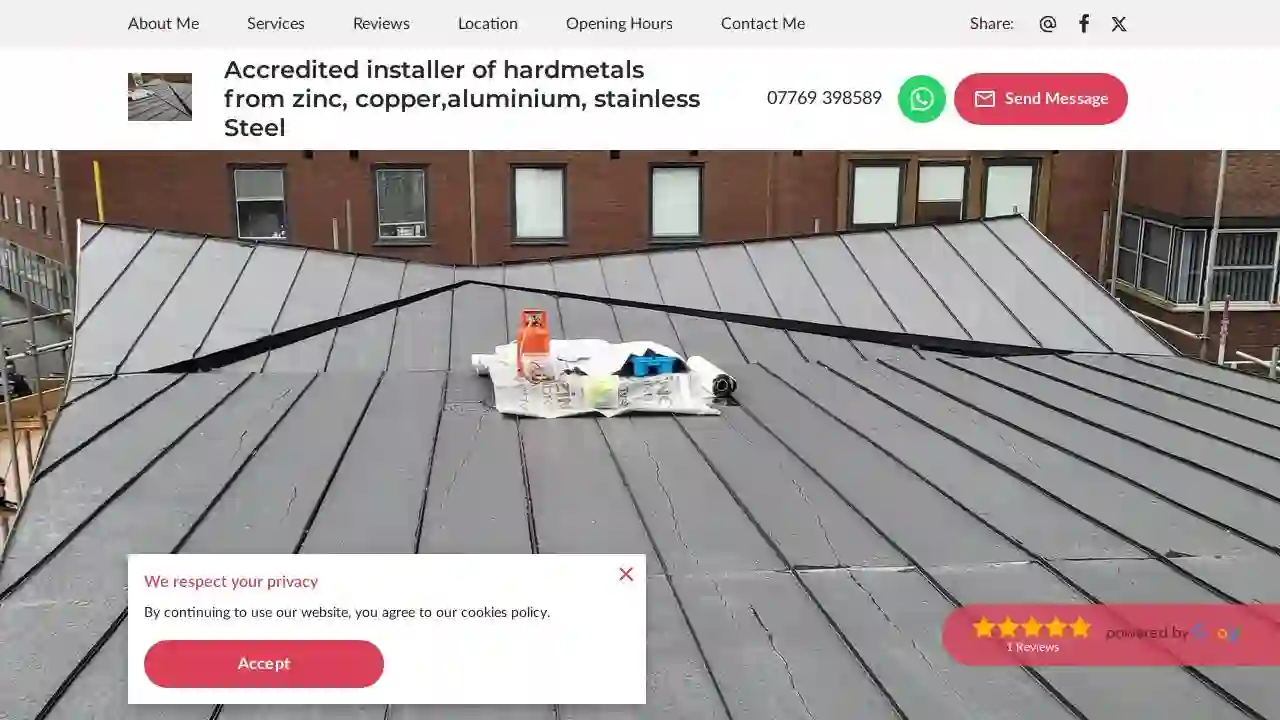
Ckm Roofing & Cladding
51 reviews59 Australia Grove, South Shields, NE34 9DF, GBCkm Roofing And Cladding is a team of dedicated roofers serving South Shields. We handle all aspects of roofing, from small patching jobs to complete re-roofing. We specialize in zinc, copper, aluminium, and stainless steel roof tiling, strip and recover, and new builds. Our services also include slate, modern tile patch work, insulation, V-lux installation, and free quotes. We pride ourselves on our quick, reliable service, skilled workmanship, and attention to detail. Our team is courteous, approachable, and up-to-date with the latest building regulations, ensuring all projects are completed safely and to the highest standards.
- Services
- Why Us?
- Testimonials
- Gallery
Get Quote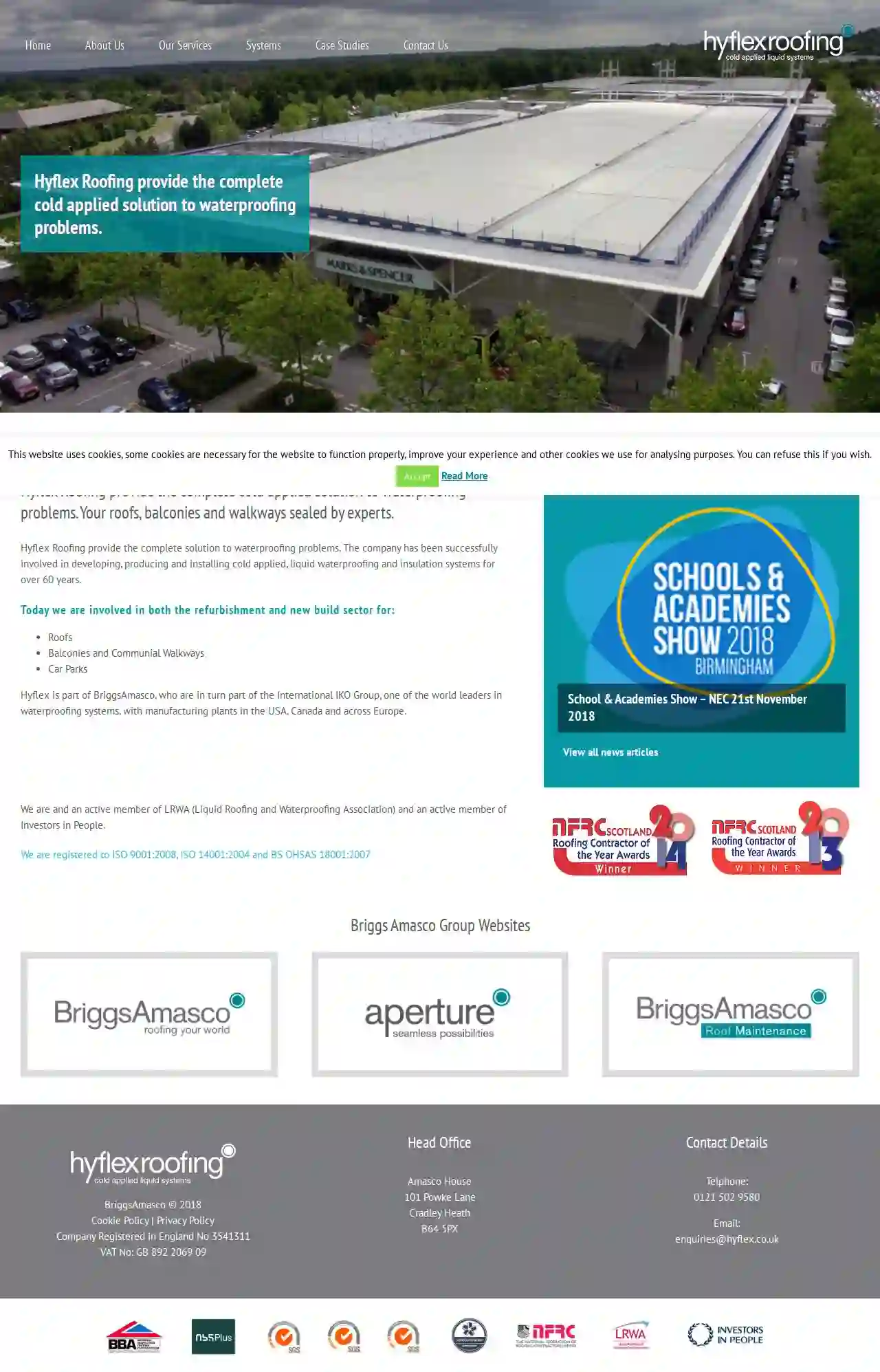
Hyflex Roofing
101 Powke Lane, Amasco House, Cradley Heath, B64 5PX, GBHyflex Roofing provide the complete cold applied solution to waterproofing problems. Your roofs, balconies and walkways sealed by experts. Hyflex Roofing provide the complete solution to waterproofing problems. The company has been successfully involved in developing, producing and installing cold applied, liquid waterproofing and insulation systems for over 60 years. Today we are involved in both the refurbishment and new build sector for: Roofs Balconies and Communial Walkways Car Parks Hyflex is part of BriggsAmasco, who are in turn part of the International IKO Group, one of the world leaders in waterproofing systems, with manufacturing plants in the USA, Canada and across Europe.
- Services
- Why Us?
- Accreditations
- Gallery
Get Quote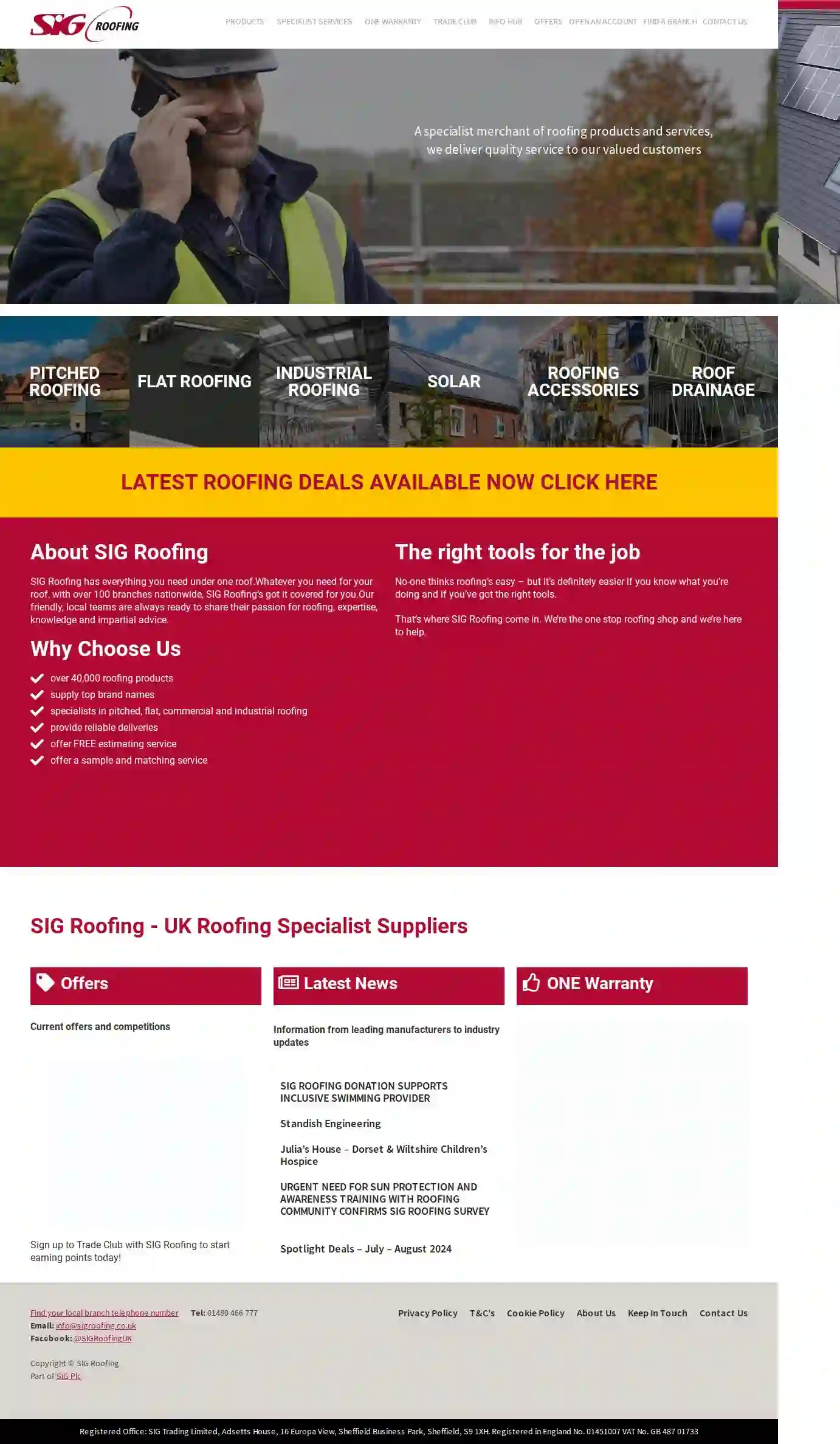
SIG Roofing Gateshead
4.839 reviewsNA, GBSIG Roofing is a specialist merchant of roofing products and services, delivering quality service to our valued customers. Established for over 40 years – with branches throughout the UK from Inverness to Plymouth. We have everything you need under one roof. Whatever you need for your roof, with over 100 branches nationwide, SIG Roofing’s got it covered for you. Our friendly, local teams are always ready to share their passion for roofing, expertise, knowledge and impartial advice.
- Services
- Why Us?
- Accreditations
- Our Team
- Testimonials
- Gallery
Get Quote
Hadrian's Home Improvements Ltd
4.9120 reviewsClavering Place, Clavering House, Newcastle-upon-Tyne, NE1 3NG, GBHadrian's Home Improvements is the No1 rated Home Improvement company in North East England. Friendly, reliable, and experienced. Serving the whole of North East England. We are proud to have been awarded Best Roofer Newcastle award for 2023 on Quality Business Awards. Get in touch for our award winning roofing service! All work fully guaranteed. No deposit required. Free estimates and advice. Over 110+ Glowing Customer Reviews. Interest-free payment plans.
- Services
- Why Us?
- Accreditations
- Testimonials
- Gallery
Get Quote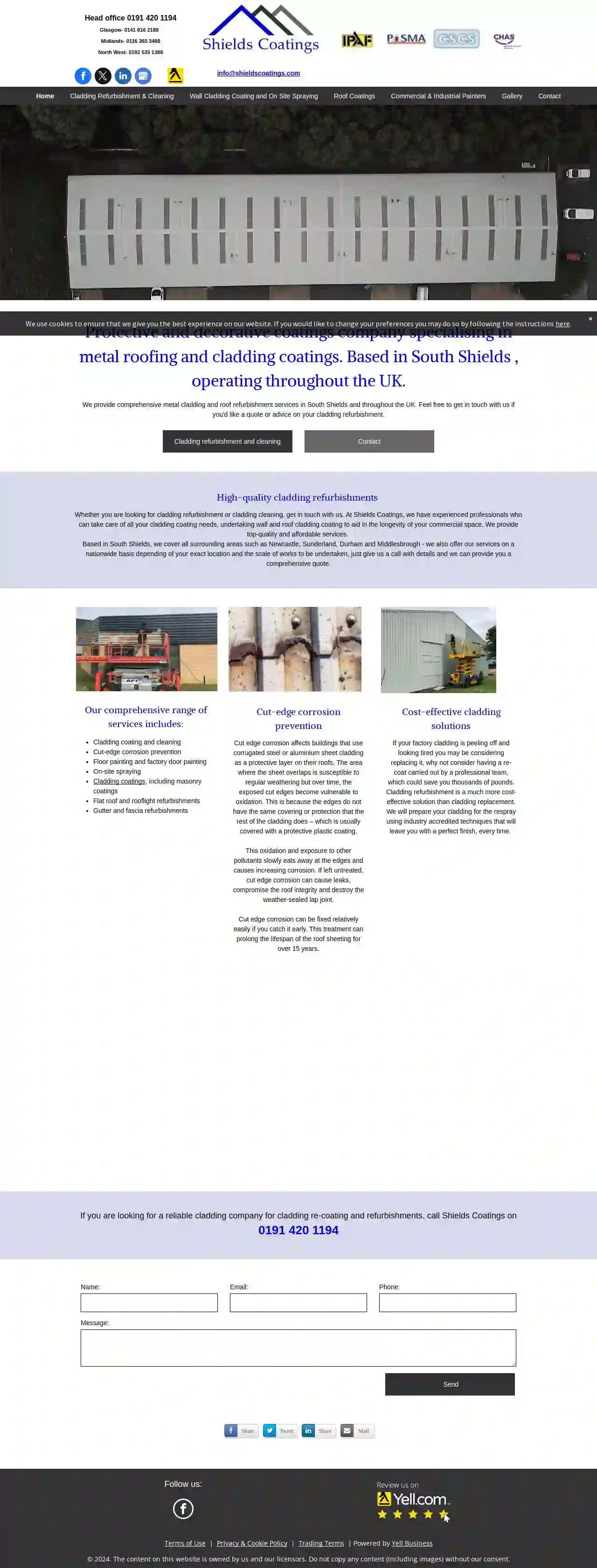
Shields Coatings
41 reviewsUnit 40c Lindisfarne Court, Bede Trading Estate, Jarrow, NE323HG, GBShields Coatings is a protective and decorative coatings company specialising in metal roofing and cladding coatings. Based in South Shields, operating throughout the UK. We provide comprehensive metal cladding and roof refurbishment services in South Shields and throughout the UK. Feel free to get in touch with us if you'd like a quote or advice on your cladding refurbishment. Our comprehensive range of services includes: Cladding coating and cleaning, Cut-edge corrosion prevention, Floor painting and factory door painting, On-site spraying, Cladding coatings, including masonry coatings, Flat roof and rooflight refurbishments, Gutter and fascia refurbishments. We are open between 8 AM and 8 PM, from Monday to Friday, so why not contact us today.
- Services
- Why Us?
- Gallery
Get Quote
Over 12,314+ Roofers registered
Our roofing pros operate in Wallsend and beyond!
Roofyng.co.uk has curated and vetted the Best Roofing Contractors in and around Wallsend. Find the most reliable pro today.
Frequently Asked Questions About Roofing Companies
- Safety First: Avoid going onto the roof during a storm, as it's dangerous.
- Document the Damage: Take photos and videos of the damage for insurance purposes.
- Contact Your Insurance Company: Report the damage to your insurance company as soon as possible to initiate a claim.
- Temporary Repairs: If safe, address any immediate leaks using buckets or tarps to minimize further damage.
- Contact a Roofing Contractor: After the storm, have a qualified roofing contractor inspect the roof and provide a repair estimate.
- Hot Climates: Opt for light-colored or reflective roofing materials to reduce heat absorption. Consider tile roofs for their thermal mass and heat resistance.
- Cold Climates: Ensure your roof has adequate insulation and ventilation to prevent ice dams and moisture buildup. Metal roofs can shed snow effectively.
- High-Wind Areas: Choose roofing systems with high wind ratings and properly installed hurricane straps or clips to enhance wind resistance.
- Areas with Heavy Rainfall: Ensure your roof has proper drainage and a waterproof membrane to prevent leaks.
- Home Improvement Loans: Offered by banks or credit unions.
- Home Equity Loans or Lines of Credit: Use your home's equity as collateral.
- Government Programs: Check for energy efficiency rebates or grants.
- Contractor Financing: Some roofing companies offer financing plans.
What should I do if my roof is damaged in a storm?
What should I do with my old roof after replacement?
How do I choose the right type of roof for my climate?
How can I get financing for a new roof?
What should I do if my roof is damaged in a storm?
- Safety First: Avoid going onto the roof during a storm, as it's dangerous.
- Document the Damage: Take photos and videos of the damage for insurance purposes.
- Contact Your Insurance Company: Report the damage to your insurance company as soon as possible to initiate a claim.
- Temporary Repairs: If safe, address any immediate leaks using buckets or tarps to minimize further damage.
- Contact a Roofing Contractor: After the storm, have a qualified roofing contractor inspect the roof and provide a repair estimate.
What should I do with my old roof after replacement?
How do I choose the right type of roof for my climate?
- Hot Climates: Opt for light-colored or reflective roofing materials to reduce heat absorption. Consider tile roofs for their thermal mass and heat resistance.
- Cold Climates: Ensure your roof has adequate insulation and ventilation to prevent ice dams and moisture buildup. Metal roofs can shed snow effectively.
- High-Wind Areas: Choose roofing systems with high wind ratings and properly installed hurricane straps or clips to enhance wind resistance.
- Areas with Heavy Rainfall: Ensure your roof has proper drainage and a waterproof membrane to prevent leaks.
How can I get financing for a new roof?
- Home Improvement Loans: Offered by banks or credit unions.
- Home Equity Loans or Lines of Credit: Use your home's equity as collateral.
- Government Programs: Check for energy efficiency rebates or grants.
- Contractor Financing: Some roofing companies offer financing plans.